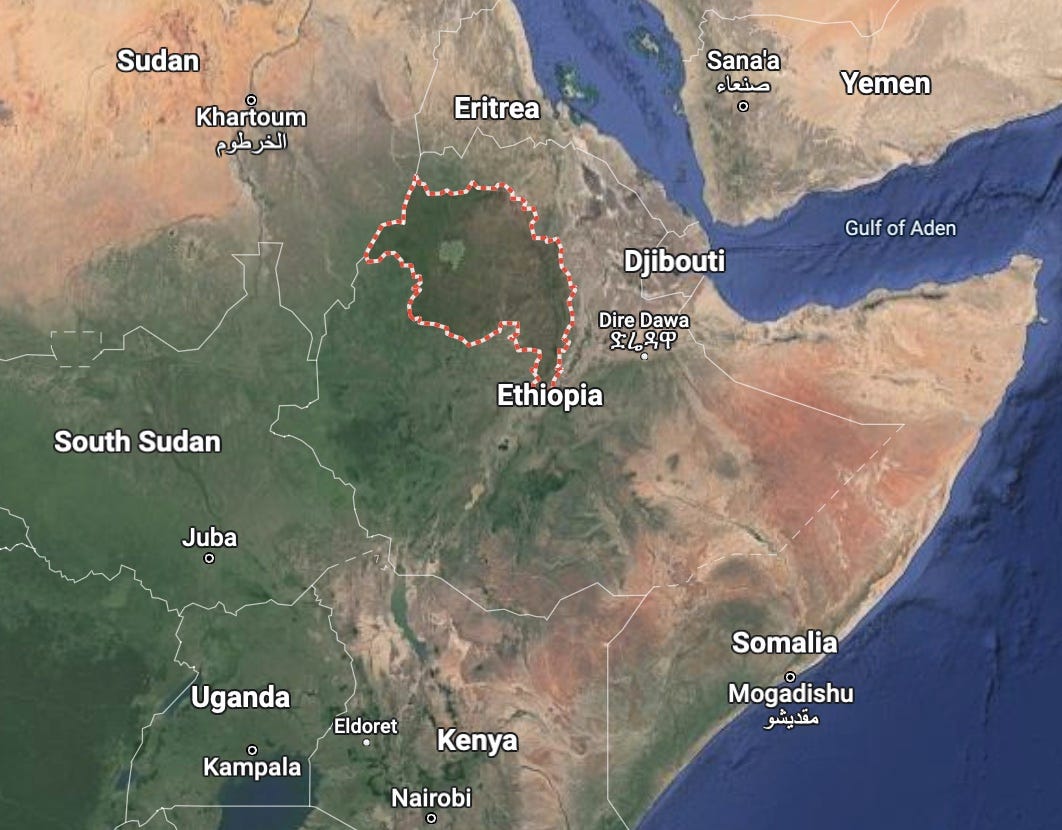Amhara Conflict in Ethiopia
A Conflict Mapping Report on the Situation in Amhara
Amhara Conflict Mapping Report
Conflict Overview
Location: Amhara, Ethiopia.
Date: (Occurred within weeks of August 2023).
Main Actors:
Federal Military of Ethiopia
Fano militia group
Secondary Actors:
Civilian protesters
Eritrean forces
Tigray People’s Liberation Front (TPLF)
Oromo Liberation Army (OLA)
Key Events
Irregular militia fighters, Fano, seize control of multiple towns and cities in Amhara, Ethiopia’s second-largest region.
Federal military response: The Ethiopian military intervened to restore order, utilizing tanks, artillery, and airstrikes, leading to violence and casualties.
State of emergency declared: Due to the escalating situation, the Ethiopian government declared a state of emergency.
Humanitarian impact: Disruption to humanitarian access and potential endangerment of children and refugees.
Withdrawal: Fano retreats to the countryside post-military intervention but remains active.
Causes of the Conflict
Historical tensions: The term “Fano” historically means “freedom fighter” in Amhara.
Regional dissent: Despite peace efforts in neighboring Tigray, tensions persisted in Amhara, leading to local skirmishes and power struggles.
Ethnic divisions: Ethnic divisions, notably between the Amhara and Oromo ethnic groups, have exacerbated mistrust and conflicts.
Territorial claims: Disputes over territories, such as Western Tigray, have contributed to hostilities.
Feelings of betrayal: There's a sentiment among Amharas that they have been neglected or deceived by Prime Minister Abiy Ahmed and the central government.
Consequences of the Conflict
Civilian casualties: Unknown number of civilians killed due to the conflict.
Humanitarian crisis: Disruption to aid and potential risk to vulnerable populations, including children and refugees.
Economic impact: Likely damage to infrastructure and disruptions to economic activities, especially in areas like Lalibela, a major tourist destination.
Regional stability: Prolonged conflict may have a domino effect, causing instability in neighboring regions and potentially escalating existing tensions.
Potential Solutions and Interventions
Community dialogue: Open a channel for discussion between the federal government and the Fano militia to understand grievances and seek non-violent solutions.
Humanitarian assistance: Ensure the rapid delivery of humanitarian aid to affected regions.
Third-party mediation: Utilize neutral third parties, such as international organizations, to mediate and foster discussions.
Local governance: Consider restructuring local governance mechanisms to provide more autonomy or representation to Amhara, potentially alleviating feelings of neglect or betrayal.
Cultural and educational programs: Implement programs to promote understanding and unity between various ethnic groups in Ethiopia.
Possible Future Developments
Escalation of Guerrilla warfare: Given the Fano's retreat to the countryside and their widespread support, guerrilla warfare tactics might become more prevalent.
Spillover to neighboring regions: The conflict might spread to other areas, particularly given historical and current tensions with Tigray and Oromia.
International involvement: Given the potential humanitarian impact, international actors might intervene diplomatically or through peacekeeping missions.
Potential negotiations: If the government acknowledges the concerns of the Fano and its supporters, there may be room for negotiation and reconciliation.
Recommendations
Prioritize diplomatic channels: The federal government should prioritize peaceful dialogue and avoid further militarization of the conflict.
Engage international mediators: Invite neutral international organizations to help mediate the situation.
Address root causes: The government should consider socio-economic and cultural interventions to address underlying causes, such as unemployment and ethnic tensions.
Increase transparency: Build trust by increasing governmental transparency and addressing grievances openly and fairly.
Sources: Al Jazeera | The New Humanitarian | AP News
This ARAC Conflict Mapping Report provides an overview of the ongoing situation in Amhara, Ethiopia. Continued monitoring and timely interventions are necessary to prevent further escalation and ensure the safety and well-being of the population.



